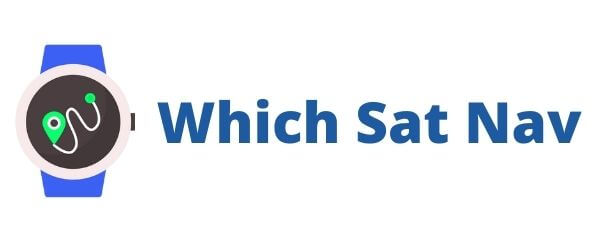Do you want to know how to get somewhere or what time you are going to arrive at your destination? There’s a range of options available out there in order to help you out. Indeed, a quick look at the cars on the road and you will more than likely see some sort of satellite navigation device inside. They really have become part of our everyday lives and we tend to take them for granted.
What options are available for navigating your car journeys?
GPS Buying Guide
Integrated Satellite Navigation
Some vehicles are fitted with this type of system built into the dashboard by the manufacturers.
Advantages– you get a larger screen and full integration with the other functions of the car. The lights, your phone, the air conditioning are all visible and controlled from the one screen. The unit itself does look neater as you do not have wires trailing around the dashboard.
Disadvantages – these systems are expensive. They can cost and an additional £1500 to fit as an option onto a new car. Bear in mind also that the system is not transferable – you won’t be able to bring it with you when you are driving another vehicle. It can also be expensive to upgrade the maps on the system as you have to purchase directly from the car manufacturer.
Portable Satellite Navigation
These are off the shelf devices that are mounted either onto the windscreen or the dashboard
Advantages – are typically a cheaper sat-nav option. They can be carried with you into other vehicles or when you are walking around a foreign city. The mapping systems are regularly updated online (often for free on a number of devices) and they also provide details of speed cameras. They are also useful for finding places of interest, tourist attractions and restaurants, etc
Disadvantages – it’s important to remember to take the unit with you (or hide it in the glovebox) when you leave the vehicle as they can be a target for thieves. It may not be to everyone’s taste to have a wire running from the device to obtain power from the lighter unit.
Smartphone Mapping Applications
With the rise in popularity of smartphones, there are also a number of apps providing sat-nav services
Advantages – convenience. This is probably the only truly portable option as most people will always have their smartphones with them. Many of the apps can be easily integrated with any internet searches and they generally have very customizable features.
Disadvantages – it can be difficult to see the smaller screen when driving. It may prove costly to have to pay for the mobile data services and incoming calls may get cancelled. Many of the apps are also notorious for shortening the battery life of your phone.
[wpsm_quote author=”The Pew Research Center, 2013″ float=”none” width=”50″]49% of all American cell phone users use their devices for getting directions or location based services[/wpsm_quote]
Ok, so what else should I take into consideration?
Mapping
Many of the manufacturers make money out of you by charging for updating the maps on your device. This can prove to be expensive but in fairness, you probably won’t be updating them that often.
Depending on the model purchased, Garmin and TomTom may provide either 12 months worth of updates or with Lifetime Maps provide these for free.
Speed Cameras
Are you one of those people with heavy feet? Although, we don’t condone speeding in any way it may be a good idea to have a system that warns you of where the cameras are situated.
Another useful feature is seeing the speed limit of the road you are travelling on the screen of the sat nav. This is great when the speed limits change frequently during your journey.
Live Traffic Updates
This is a feature typically found on the higher-end devices. This is useful as it will let you know if there is a traffic jam or bad weather up ahead. You can then avoid the congestion by going a different route.
Some devices will require a smartphone in order to connect and access these services. Better units will have an inbuilt sim card meaning that access will cost nothing (however there is usually a higher purchase price).
Below I have outlined the main offerings by two of the main players in the market today – TomTom and Garmin.
[wpsm_dropcap]Garmin nüvi® [/wpsm_dropcap]
[wpsm_colortable color=”orange”]
| UK | Essential Series | Advanced Series | Prestige Series |
|---|---|---|---|
| Screen Size | 5″ or 6″ | 5″, 6″ or 7″ | 6″ |
| Price Range | £90 – £160 | £140 – £270 | £270 – £310 |
| Features | Garmin Real Directions, Possible to Pair with Rear Camera | Pinch & Zoom Displays, Photo Real Junction view | Built-in Dash Cam, Magnetic Mount, Garmin Real Vision |
| No. of Models | 20 | 8 | 2 |
[/wpsm_colortable]
[wpsm_dropcap]TomTom Go[/wpsm_dropcap]
[wpsm_colortable color=”orange”]
| UK | Entry Level | Mid-Level | Premium |
|---|---|---|---|
| Screen Sizes | 4″, 5″ or 6″ | 5″ or 6″ | 5″ or 6″ |
| Price Range | £100 – £140 | £120 – £200 | £190 – £300 |
| Features | Lifetime Maps (via smartphone) | Pinch & Zoom, Click & Go, Lifetime Speed Cameras | Unlimited data & roaming, in-built sim |
| No. of Models | 3 | 2 | 2 |
[/wpsm_colortable]
[wpsm_dropcap]A[/wpsm_dropcap]s you can see there are lots of options and devices available to you. Hopefully, the information provided on this website will help you in making the right purchasing decision.
Check out another post for more information Garmin vs TomTom – Which is Better?
Here’s to safe and happy motoring 🙂


